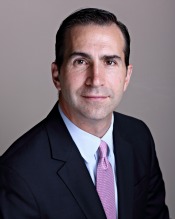Is there a magic number?
As the amount of trading done away from the public markets has surged in the past year to record highs, industry officials are starting to worry the trend will lead to deterioration in the quality of the U.S. stock market.
With fewer shares being bid for on the nation’s stock exchanges, the validity of the market’s best prices could be called into question. In the argot of stock traders, “price discovery” may be compromised.

“We need to look at what is happening,” Joe Gawronski, president and chief operation officer at Rosenblatt Securities, told the crowd at the Investment Company Institute’s annual market structure conference this year. “Off-exchange trading hit 38 percent in September. That is a big number. It’s a dramatic increase since 2008. A record.”
In early 2009, off-exchange trading accounted for 21 percent of total volume, according to a report published last year by CFA Institute. Last fall, it stood at 33 percent. As Traders Magazine was going to press, it was 38 percent. Nobody knows for certain what’s driving the surge. Nor does the industry agree on whether there exists some magic number that will trigger a deterioration in overall market quality.
“I have to disagree with anybody who says that 30 percent or 40 percent or whatever can’t be good,” Gregg Berman, an associate director in the Securities and Exchange Commission’s Division of Trading and Markets, said at the ICI gathering. “Why can’t it be a good number? What’s wrong with having 30 percent or 40 percent? We need to know what the actual effect is that people care about, such as price discovery or market quality.”
If the number is not 40 percent, then maybe it’s 50 percent. At that level, a study conducted by CFA Institute last year concluded, bid-ask spreads start to widen and market quality deteriorates. “If the majority of order flow is filled away from pre-trade transparent markets, investors could withdraw quotes because of the reduced likelihood of those orders being filled,” the report noted. “As investors become dis-incentivized from displaying orders, bid-offer spreads are likely to widen.”
Most off-board trading is conducted by institutional brokers matching orders in alternative trading systems-such as dark pools-or wholesalers making markets for retail brokers. A lesser amount is traded in ECNs or over the telephone.
There is little difference in the rates of off-exchange trading among small-, mid- and large-capitalization stocks, according to CFA Institute. The group’s study did note, however, that dealers internalized a much higher proportion of small caps than mid or large caps. CFA Institute attributed that to the wider spreads of small caps and thus fatter dealer profits. By contrast, the study noted that dark pools matched a smaller percentage of small-cap names than mid or large caps.
A CALL FOR ACTION
For one exchange operator, the numbers have gone high enough. “We’ve produced data,” Joe Mecane, head of U.S. equities at NYSE Euronext, operator of three U.S. stock exchanges, said at the ICI conference, “that gives evidence that at the levels we are, that we do have a problem.”
Mecane believes it’s time to stop talking about magic numbers and start taking action. He wants to see wholesalers pay more for the orders they internalize and move toward a market structure that prioritizes limit order display.

Gawronski, whose firm has long had a presence on the New York Stock Exchange, shares his concern. “Between 10 percent and 15 percent of executions are retail marketable orders that never see the light of day,” Gawronski said. “They get executed by wholesalers. It’s a separate part of the ecosystem, and it’s not contributing to price discovery.”
The largest wholesalers are KCG Holdings, Citadel Securities, G1 Execution Services (just acquired by Susquehanna International Group), Citigroup and UBS.
Internalization of retail orders by wholesalers is the largest contributor to off-board trading, according to CFA Institute data. It is also the likely driver of most of the growth in off-board trading in the past two years, said Greg Tusar, co-head of global execution services and platforms at KCG Holdings. That’s because “institutional volume turnover has decreased,” he said at the Securities Industry and Financial Market Association’s market structure conference this year.
In its report, CFA Institute suggested the wholesalers should be reined in. Because they intercept so much desirable “uninformed” retail flow, adverse selection risk increases at the exchanges, discouraging traders from posting limit orders, it claimed.
FOR AND AGAINST THE TRADE-AT RULE
CFA Institute suggests that regulators should require wholesale market makers to provide a higher level of price improvement on their retail orders-by as much as a penny or half the spread-or route their orders away. This is known as a trade-at rule and is already under consideration by the SEC.
At least one buyside trader sees value in a trade-at rule. “It’s extraordinary that someone can price improve by one-hundredth of a penny,” Andy Brooks, T. Rowe Price Associates’ head of equity trading, said at the ICI conference. “For gosh sakes, are you kidding? It seems to me that a trade-at rule naturally needs to be on the table so people are required to seek significant price improvement in order to internalize an order.”
Wholesalers are vehemently opposed to a trade-at rule and have argued that any rule that forces them to provide 1-cent price improvement-i.e., bettering the customer’s price by a penny-would drive them out of business.
At the SIFMA gathering, Dave Weisberger, an executive principal at wholesaler Two Sigma Securities, declined to address the pros and cons of wholesaling. Rather, he argued that any industry discussion about the impact of off-board trading on market quality needs to define its terms.
For Weisberger, “market quality” does not necessarily refer to price discovery on the public exchanges. Rather, it means lower transaction costs and trading efficiency. “The way you define the debate will lead us to where we want to go,” he told the SIFMA crowd.
“What does the institutional investor really care about?” Weisberger asked. “That they can buy stock at a reasonable price compared to where it was on the screen before they started to buy it.”
Weisberger’s comments echo those who say the market’s best prices are meaningless for the large institutional buyer or seller because there are typically relatively few shares associated with those prices.
“We’ve done a terrific job from a market structure perspective at helping the retail investor,” Tusar said, adding, “but potentially made the job much more difficult for the institutional investor with respect to finding liquidity in larger sizes.”
(c) 2013 Traders Magazine and SourceMedia, Inc. All Rights Reserved.
http://www.tradersmagazine.com http://www.sourcemedia.com/




